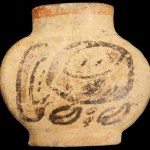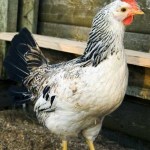Origin of Agriculture
I have a love-hate relationship with farmers. I have a great deal of respect for the enterprise and for those who dedicate their lives to it. But, I also become annoyed at the culture in which modern American farming embeds itself. And, I don't feel a lot of reticence talking openly about that.
Having done plenty of farming myself, I don't feel the need that so many others do to be extra nice to farmers out of lack of understanding. I know when the farmers complain about too little or too much rain, they are studiously ignoring the fact that if it is harder to plant or harvest, they make out…
OK, I admit the title of this post is possibly a bit extreme but I could not resist the symmetry. Here, I refer to both ends of civilization, the start and the finish.
I'd like to talk about a recent review published in Science, titled "Systems integration for global sustainability" written by my colleague Peter Gleick of the Pacific Institute together with Jiangou Liu, Harold Mooney, Vanessa Hull, Steven Davis, Joane Gaskell, Thomas Hertel, Jane Lubchenco, Karent Seto, Claire Kremen and Shuxin Li. But I want to put this paper in a broader perspective, dipping into my training as an…
I'm thinking it will be the food you eat that gets you. Here's why.
Humans eat a wide variety of foods; as a species, the diversity of species we eat is greater than any other animal by a very large margin, with the only quirky exception being the animals that we take along with us, the commensals such as rats and cockroaches. Most primates eat a high diversity of foods, but about two million years ago or a bit less, according to the “Cooking Hypothesis” (which a lot of people think is correct) we took an already diverse primate diet and added to it anything we might encounter in the…
Pastoralism is the practice of keeping and herding animals such as cattle, goats and sheep, and using the products they produce, including meat, hide, bone, horn and of course, dairy. In the old days, armchair archaeologists thought that pastoralism would have been a phase of cultural adaptation following hunting and gathering and preceding horticulture (the growing of plant crops). Why did they think that? No really good reason, just a guess. However, over time evidence came along and ideas where altered and minds were changed and now it is generally thought that in Europe and West Asia…
Over the last few weeks I've run into a few misconceptions about tobacco, as well as some interesting news, so I thought I'd share. If you already know some of this, forgive me, not everyone else does.
First, tobacco, Nicotiana tabacum, is a member of the Solanaceae family of plants, which from a human perspective has got to be one of the most interesting plant families out there. It includes Belladonna, peppers, potatoes, and tomatoes. So, from this one family of plants, you can kill your neighbor, have a nice meal, and a smoke a cigar afterward.
Tobacco is a Native American cultivar.…
With Julia spending the summer and most of the fall in The Republic of Georgia, I've been thinking about various political and historical aspects of that country, and one of the things that is claimed to be true is that wine was first invented there.
Recently, someone asked me (always ask the archaeologist esoteric stuff like this) where wine was first invented. And, recently, we scored some Concord Grapes, which are native to North America (presumably thanks to some bird a long time ago) as opposed to most grapes, and which provide the roots for most (nearly all?) wine grape stock. And, a…
This post has moved HERE. To the stone age blog!
Or, when the hunting season is closed, watch teh game (the guys), or when there are no sales, admire each other's shoes (the gals)?
This is, of course, a parody of the sociobiological, or in modern parlance, the "evolutionary psychology" argument linking behaviors that evolved in our species during the long slog known as The Pleistocene with today's behavior in the modern predator-free food-rich world. And, it is a very sound argument. If, by "sound" you mean "sounds good unless you listen really hard."
I list this argument among the falsehoods, but really, this is a category of argument…
This is the third of three parts of this particular falsehood. (Here is the previous part)
I previously noted that to survive as a Westerner, you can get away with participating in a culture that asks of you little more than to understand the "one minute" button on the microwave, while to survive in a foraging society you needed much much more. Moreover, I suggested that the level of complexity in an individual's life was greater among HG (Hunter-Gatherer) societies than Western societies.
However, this is not to say, in the end, that one form of economy and society is more complex than…
The practice of growing food and keeping livestock was invented numerous times throughout the world. One 'center' of agriculture is said to be the Middle East. Despite the fact that calling the Middle East a "center" in this context is a gross oversimplification, it is true that agriculture was practiced in Anatolia and the Levant for quite some time before it was practiced in Europe, and it seems that the practice more or less spread from the middle east across Europe over a fairly long period of time.
Archaeologists have long asked the question: Was this a spread of agricultural people…
"Human nature" is an interesting topic. People will argue over the definition of human nature, but regardless of what people think or say, it is reasonable to assume that all humans share a psychological and developmental framework to the extent that any two people raised in the same background will 'turn out' similar with respect to several behavioral traits or tendencies. Also, a pair of twins separated at birth and raised up in very different cultures are likely to exhibit more differences than similarities owing to the different cultures but perhaps some set of seemingly uncanny…
This is an old story being resurrected wiht new data:
Biblical diet 'unhealthy'
A new study into the diet of ancient Israel has revealed that far from being 'the land of milk and honey', its inhabitants suffered from the lack of a balanced diet.
One of the most interesting and exciting stories in science is that of the Younger Dryas. The Younger Dryas was a climate event that had important effects on human history, and that has been reasonably linked to some of our most important cultural changes, and ultimately some evolutionary changes as well. That is one reason why it is interesting. In addition, the Younger Dryas was a pretty big deal ... a climate change or something like a climate change that caused massive changes all around the earth, and fairly recently. But the cause of the Younger Dryas is at present unknown, although…
Maize weevil, Sitophilus zeamais [usda] ... or the corn rust or the corn root cutter or whatever pathogen that comes along that cannot be fought off with a cleverly concocted combination of chemicals. This is because all we eat is corn, or so it seems.
In a paper just published in PNAS, scientists use stable isotopes to estimate the contribution of corn to the standard American diet of meat and fries from fast food. They sampled a disgustingly large number of not so happy meals from Burger King, McDonald's, and Wendy's and used this form of analysis to determine that a very large…
Corn (maize) was domesticated in the earlier part of the Holocene in Mexico from a wild plant called teosinte. Subsequent to the discovery of this area of origin by MacNeish, a great deal of research has gone on to track the spread of maize across the New World, its diversification, its effects on Native American lifeways, and so on.
How do you tell if corn was grown in a particular area? There are several possibilities, including looking for pollen in swamps and lakes or at archaeological sites, finding macro-fossils (don't be fooled by the name .. macrofossils are tiny, like individual…
A very good day of grunting worms. Credit: Ken Catania So-called Gene-Culture Co-Evolution can be very obvious and direct or it can be very subtle and complex. In almost all cases, the details defy the usual presumptions people make about the utility of culture, the nature of human-managed knowledge, race, and technology. I would like to examine two cases of gene-culture interaction: One of the earliest post-Darwinian Synthesis examples addressing malaria and sickle-cell disease, and the most recently published example, the worm-grunters of Florida, which it turns out is best…
It has become axiomatic that the use of adornment by humans is some sort of symbolic act, and thus is linked to the human symbolic and linguistic mind. The human symbolic and linguistic mind is the trait that we axiomatically believe to be the derived human feature ... the cladistic apomorphy that makes us human (as opposed to other-ape). Therefore, the use of adornment is seen by early 21st century archaeologists as evidence of modern human behavior.
Some artifacts from early archaeological sties might be adornment, or they might be 'art' (or at least "arty") and they might be related to…
Welcome to Berry Go Round #3, the blog carnival deicated to all things botanical.
The previous installment, Berry Go Round #2, is located here, at Further Thoughts. If you would like to submit an item to the next Berry Go Round, you may use this handy submission form. The Berry Go Round Home Page is here.
Let us begin right away with the Artichokes. Seeds Aside has a piece on the relationship between the artichoke and the cardoon, both known in ADL (ancient dead language) as Cynara cardunculus. The phyloge relatinship between the two, and the story of domestication for each, is very…
There is a new paper out suggesting that the Flores hominids, known as Hobbits, were "human endemic cretins."
From the abstract of this paper:
... We hypothesize that these individuals are myxoedematous endemic (ME) cretins, part of an inland population of (mostly unaffected) Homo sapiens. ME cretins are born without a functioning thyroid; their congenital hypothyroidism leads to severe dwarfism and reduced brain size, but less severe mental retardation and motor disability than neurological endemic cretins. We show that the fossils display many signs of congenital hypothyroidism, including…
Photograph of a chicken. Click to see larger version. From PLOS article cited in blog post.
Where and when were chickens domesticated?
From whence the humble chicken? Gallus gallus is a domesticated chicken-like bird (thus, the name "chicken") that originates in southeast Asia. Ever since Darwin we've known that the chicken originated in southeast Asia, although the exact details of which one or more of several possible jungle fowls is the primal form has been debated. The idea that more than one wild species contributed to the early chicken has been on the table for a long time,…





